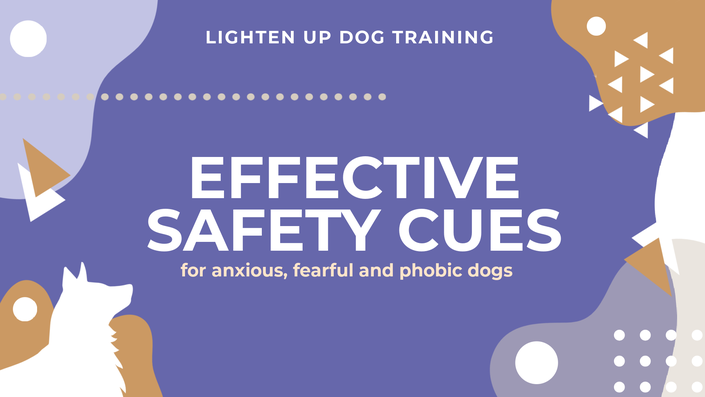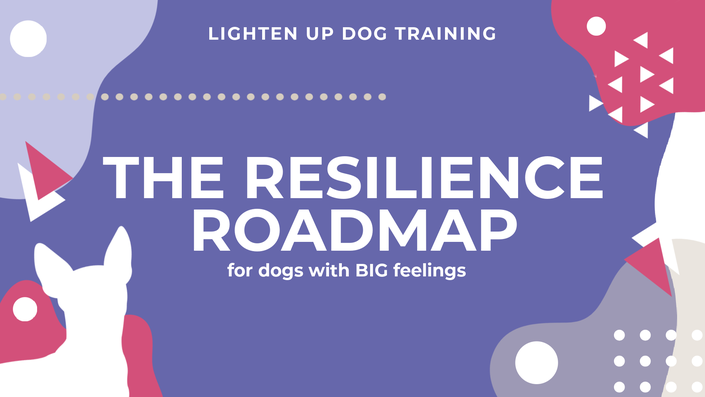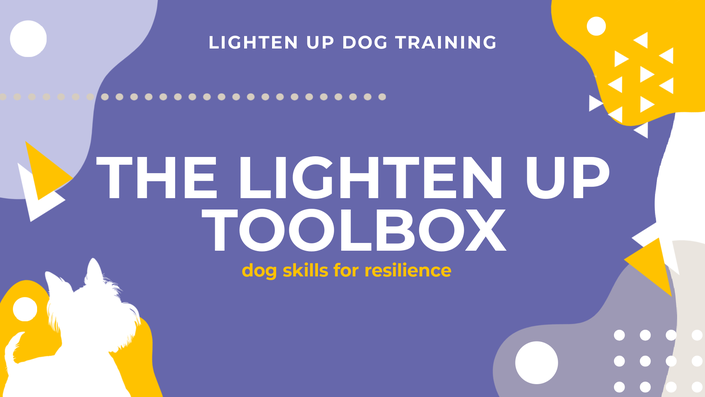THIS COURSE IS CLOSED FOR NEW ENROLMENTS
But don't fret - we'll be back in 2026
If you'd like to join the waitlist, I'll send you a message when the course re-opens.
The course will run from Monday 6th April 2026.
Doors open on Monday 2nd March 2026 so you can book your place.
REVOLUTIONISE YOUR SUPPORT FOR FEARFUL DOGS
Living or working with fearful dogs can feel like a hopeless task. For decades, we have used the same approaches that don't always bring us the solutions that truly change dogs' lives. Our gold standard approaches have often left guardians resigned to living as best they can with a dog who is still struggling.
In the past twenty-five years, there have been many therapeutic advances that can help us transform our dogs' lives more effectively and more kindly so they can go on to life more fulfilling lives.
Are you ready to take the journey to transcend fear and move towards the future?
ABOUT THE COURSE
Even when implemented perfectly, 1 in 5 dogs treated for fearful behaviour fail to respond to medication, behaviour modification or lifestyle change.
In the last two decades, there have been enormous leaps forward in practice that can help. These approaches have not only increased successful outcomes for our dogs but also made existing approaches more efficient too.
This nine month course takes you through the most up-to-date understanding we have of fear, anxiety, panic, trauma and phobias in dogs. You'll learn about how to facilitate safety too, minimising potential for retraumatisation.
You will explore the nature of fear, from its biology to its impact on well-being. You'll also look at why fear learning can be challenging to overcome before learning effective ways to combat the inherent stickiness of fear learning. The course builds into practical application so that you'll have the confidence to apply your understanding with dogs in the real world.


MALADAPTIVE FEAR
Nature never intended fear to stick around beyond usefulness. Fear is great for survival, but when it impairs function, it gets in the way of our ability to thrive.
In the course, you will explore the mechanisms of both innate and learned fear, as well as how these fears can be overcome.

SAFETY LEARNING
If you've ever been told that safety is something that can't be taught, you'll learn why this belief can get in the way of progress.
Not only can safety be learned, it can also be taught. You will learn strategies to help dogs know that they are safe across a variety of different contexts in the home and beyond.

SHIFTING THE NEEDLE
We know that learning to feel safe is never an overnight process. You will learn how to ensure safety learning builds resilience, optimism and confidence.
You will also learn how to use cutting-edge retrieval cues, priming and play to build new habits that inspire curiosity, exploration and adaptability with the dogs you live or work with.

INTO THE 21st CENTURY
You will get:
- 9 modules complete with video lectures, case studies, research and practical guidance.
- 18 bi-weekly additional recorded sessions answering your questions and delving deeper into course content.
- Contemporary practice with retrieval cues, safety cues, safety buffers and strategies to encourage cognitive reprocessing of fears.
- Modules covering development, genetics, biology, neuroscience, habituation, desensitisation, Wolpe's systematic desensitisation, Pavlovian extinction and counter-conditioning, inhibition and the challenges of moving beyond avoidance learning.
- Community support in a dedicated Facebook group.
- Permanent access to materials including developments in future re-runs of the course as well as live sessions in 2026 and beyond.
Example Curriculum
- Course welcome
- Reactivity : The Lighten Up Approach
- Frustration Revision & Crash Course (358:55)
- Sensitivity & Responsiveness Crash Course Part 1 (86:49)
- Sensitivity & Responsiveness Crash Course Part 2 (99:55)
- The Resilience Roadmap Part 1 (104:54)
- The Resilience Roadmap Part 2 (99:14)
- The Resilience Roadmap Part 3 (115:55)
- Module 1: introduction (22:27)
- Definitions of canine fear and anxiety (40:26)
- The medical model of fear and anxiety (47:00)
- A history of scientific thinking about the animal experience (64:06)
- What is an emotion anyway? (64:39)
- The constructivist and dispositional models of emotions (61:26)
- The Research Domains project (46:39)
- The neuroethological approach (116:37)
- The Lighten Up definition of fear, anxiety, panic & phobias (72:32)
- Ethical considerations of fear and anxiety (44:26)
- Module 1: plenary (18:39)
- Module 1 Additional Q&A: Can Fears Be Reinforced? (35:57)
- Module 1 Additional Q&A: Is There A Difference Between Fear & Anxiety? (19:54)
- Module 2: Introduction (23:04)
- The neuroscience of fear and anxiety (145:11)
- The biology of fear and anxiety beyond the brain (46:01)
- Inhibitory processes (62:22)
- Innate / Phylogenetic species-specific fears (64:27)
- Startle responses & reflexes (57:29)
- Habituation (56:05)
- Sensitisation (50:12)
- Issues with today's gold standard approaches (54:35)
- Module 2: plenary (10:23)
- Module 3: introduction (6:03)
- Trait vs state anxiety and fear (67:10)
- Heritable factors of fear (64:15)
- Canine fear, heritability and behaviour (57:48)
- Contextual fear and cued fear (52:56)
- An overview of learned fears (35:28)
- Creation of fear in the lab (54:18)
- Pavlovian extinction of fear in the lab (46:43)
- Operant avoidance in the lab (57:26)
- Not all stimuli are created the same (45:54)
- Social facilitation and socially acquired anxiety and fear (63:41)
- Developmental aspects of fear and anxiety (33:20)
- Emotion regulation (63:16)
- Module 3: plenary (9:07)
- Module 4: Introduction (24:57)
- Behaviour systems (82:55)
- Fear: respondent conditioning (72:10)
- Fear: respondent extinction (77:12)
- Escape and avoidance learning: operant conditioning (73:01)
- Fear: operant extinction (89:28)
- The Five Rs: when fear comes back (75:20)
- The Rescorla-Wagner model and how it helps us think about learning & extinction (155:39)
- Acquisition, consolidation and reconsolidation of learning & memory (83:56)
- Canine cognitive competences: appraisal, salience and signal detection (132:34)
- Prediction, prediction errors and learning (86:06)
- Inside the black box (70:30)
- Downregulation and cognitive reappraisal (66:54)
- Module 4: plenary (11:33)
- Module 5: Introduction (11:12)
- What a puppy inherits (51:52)
- The impact of gestational stress (52:29)
- Early development (52:36)
- Socialisation: are we getting it right? (49:49)
- Deprivation Syndrome (54:44)
- Single event fear learning & traumatic responses (51:32)
- Fear periods? (83:36)
- Adolescence, anxiety and fear (86:57)
- Age, anxiety and fear (60:10)
- Module 5: plenary (9:57)





